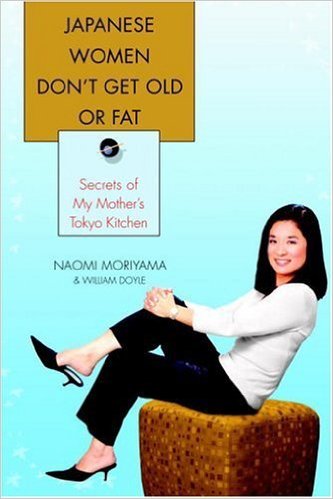 I picked up this book because Carrie (or CKHB) from Heim Binas Fiction mentioned it on her blog. I usually do not buy into this fascination with other culture’s eating habits. I do not believe the answer rests into what others eat. I do not think that America’s weight problem is caused by the wrong local diet, but by a too processed diet. I think that people from each region of the world should eat the food that is easily available to them in their own area. I think that local food is the food that our bodies need. Even the Japanese, who now eat 10 percent of the fish that is consumed in the entire world, only started to eat fish (so much of it) in the 1600 when some emperor who was Buddhist put under interdiction the eating of any other animal meat like the usual lamb, chicken, beef, etc. So for 200 years, as long as the interdiction was in place, the Japanese completely changed their diet. I doubt they became thinner after that. I also doubt that their diet is possible for everyone, if you don’t live on an island surrounded by fish.
I picked up this book because Carrie (or CKHB) from Heim Binas Fiction mentioned it on her blog. I usually do not buy into this fascination with other culture’s eating habits. I do not believe the answer rests into what others eat. I do not think that America’s weight problem is caused by the wrong local diet, but by a too processed diet. I think that people from each region of the world should eat the food that is easily available to them in their own area. I think that local food is the food that our bodies need. Even the Japanese, who now eat 10 percent of the fish that is consumed in the entire world, only started to eat fish (so much of it) in the 1600 when some emperor who was Buddhist put under interdiction the eating of any other animal meat like the usual lamb, chicken, beef, etc. So for 200 years, as long as the interdiction was in place, the Japanese completely changed their diet. I doubt they became thinner after that. I also doubt that their diet is possible for everyone, if you don’t live on an island surrounded by fish.Even so, although I believe that there is not big secret diet that can keep anyone thin and young forever, Japanese food and Japanese culture are so interesting, different and fascinating that I couldn’t help reading this book. And I’ve learned a lot of things. Like how to make rice balls, the best thing ever. (These below are the ones I’ve made.)
I love sushi but it is hard to make those rolls at home. Believe me, I’ve made them stubbornly a few times. But these rice balls (originally just made of fresh sushi rice, without any seasoning and filled with some traditional pickled fruit) can be a great sushi substitute if you season the rice and fill it with sushi fillings, right? I think so. And they are incredibly easy to make. You will find them very often in my kitchen.
I also learned from the book how to make miso soup, which my husband is crazy for. For the first time, after reading this, I walked into an Asian market with the feeling that I actually knew what I was doing.
The book also made me rethink tofu. I am generally afraid of soy products, and I try to use them sparingly, because of the estrogen mimicking properties of soy. But after all, there are entire populations who eat soy daily and it doesn’t really hurt them. So, I don’t know. Maybe it’s not that bad. One thing I found out about tofu, is that it became so popular in Japan because it was very quickly adopted by the Zen monks, who eat only vegetarian food. And because I’ve gotten to the Zen monks subject, I am going to close this review with the five Zen reflections before a meal (as presented in this book), which I am thinking to print and post above my dining table:
I reflect on the work that brings this food before me; let me see whence this food comes.
I reflect on my imperfections, on whether I am deserving of this offering of food.
Let me hold my mind free from preference and greed.
I take this food as an effective medicine to keep my body in good health.
I accept this food so that I will fulfill my task of enlightenment.



